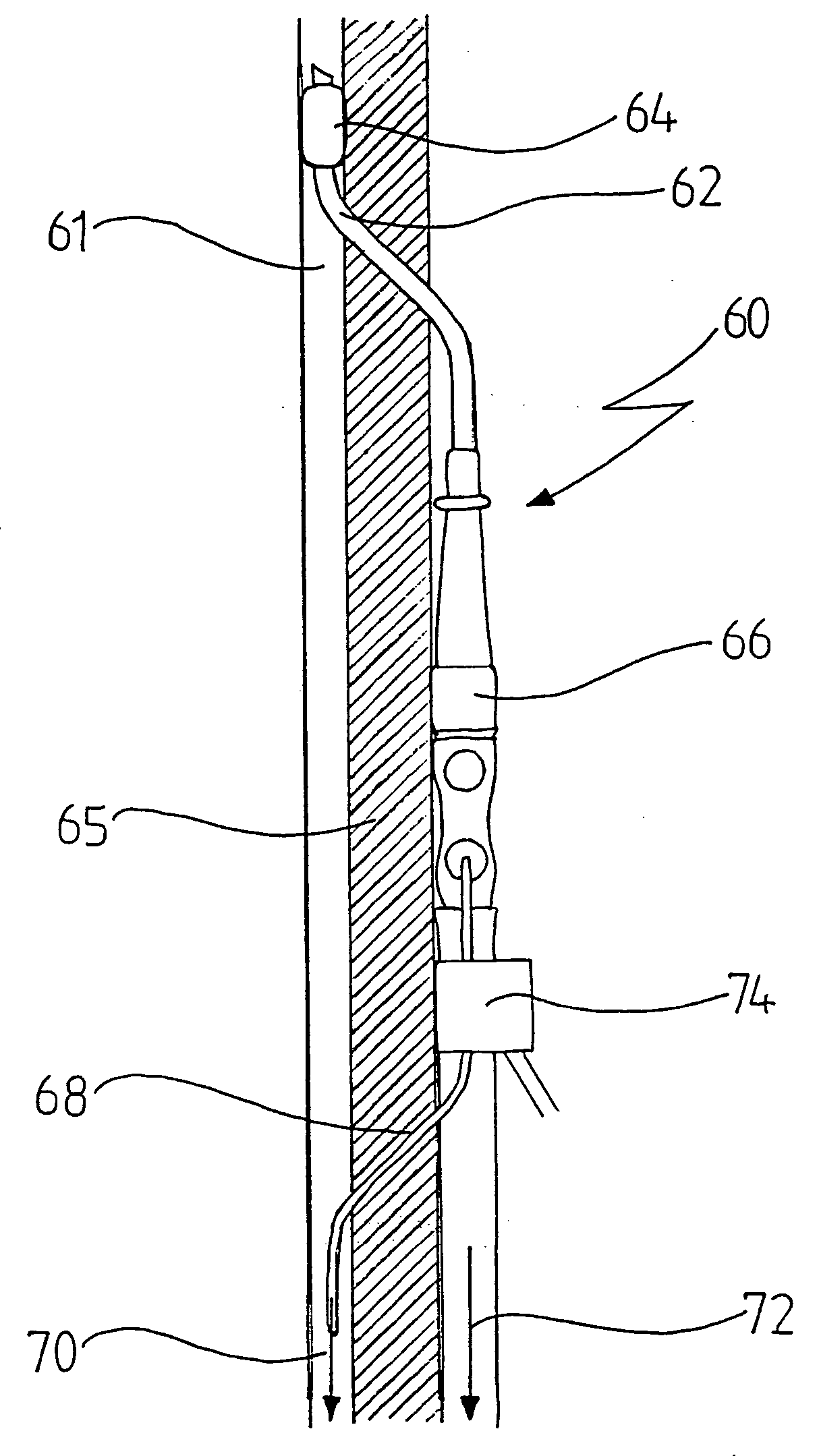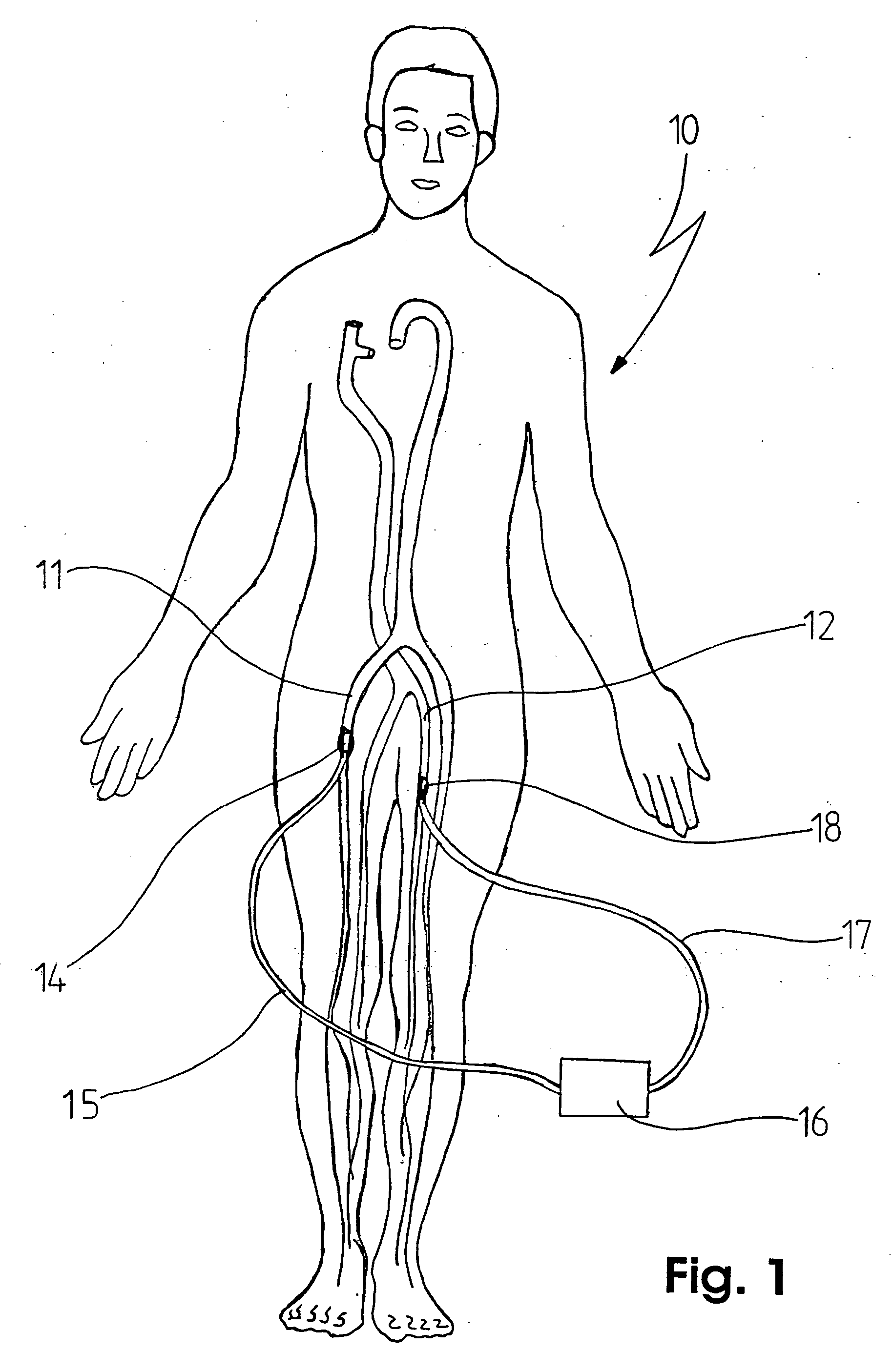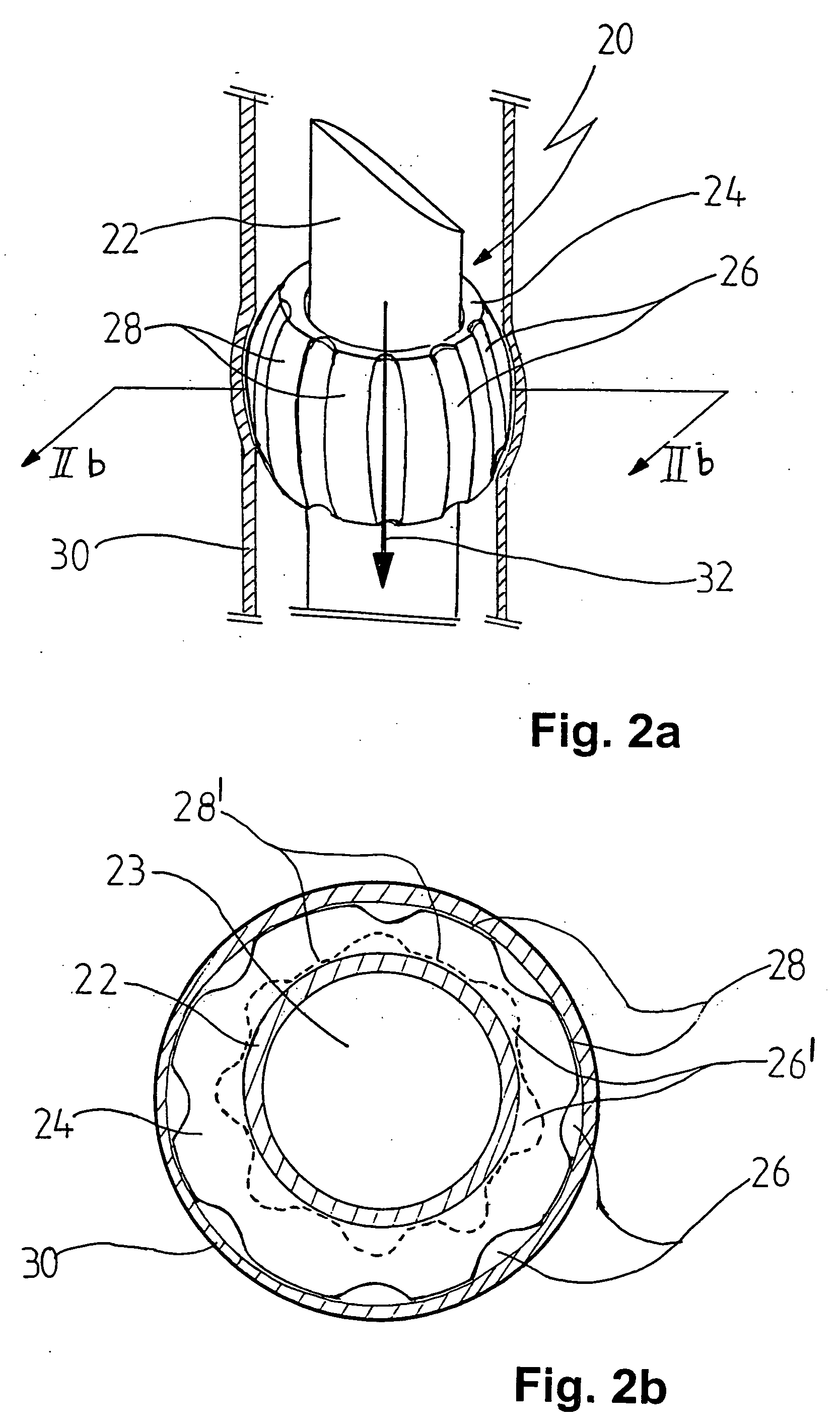Appliance for cannulation of a blood vessel
a technology for cannulas and blood vessels, applied in the direction of blood sampling devices, balloon catheters, dilators, etc., can solve the problems of irritating the vessels, affecting the blood supply to the distal areas of the leg with the arterial cannula, and severe contraction of the arteries in particular
- Summary
- Abstract
- Description
- Claims
- Application Information
AI Technical Summary
Benefits of technology
Problems solved by technology
Method used
Image
Examples
Embodiment Construction
[0092] In FIG. 1, reference number 10 designates a patient whose femoral artery is designated by 11 and whose femoral vein is designated by 12. Blood is removed from the femoral artery 11 via a cannula 14. A tube 15 leads from the cannula 14 to a lung assist device 16, and a further tube 17 leads from the lung assist device 16 to a further cannula 18 in the femoral vein 12.
[0093] FIG. 1 shows the system of extracorporeal lung assist using a femoral connection technique. Alternatively, a connection is also possible, for example, to the jugular vein via the femoral artery 11. The cannula 14 is chosen with a diameter optimally adapted to the femoral artery 11 of the patient 10 and is introduced into the femoral artery 11 as critical vessel. The patient's mean arterial pressure ensures that the blood is conveyed from the femoral artery 11 via the tube 15 to the lung assist device 16. A suitable lung assist device in the form of a membrane oxygenator is obtainable, for example, from the ...
PUM
 Login to View More
Login to View More Abstract
Description
Claims
Application Information
 Login to View More
Login to View More - R&D
- Intellectual Property
- Life Sciences
- Materials
- Tech Scout
- Unparalleled Data Quality
- Higher Quality Content
- 60% Fewer Hallucinations
Browse by: Latest US Patents, China's latest patents, Technical Efficacy Thesaurus, Application Domain, Technology Topic, Popular Technical Reports.
© 2025 PatSnap. All rights reserved.Legal|Privacy policy|Modern Slavery Act Transparency Statement|Sitemap|About US| Contact US: help@patsnap.com



